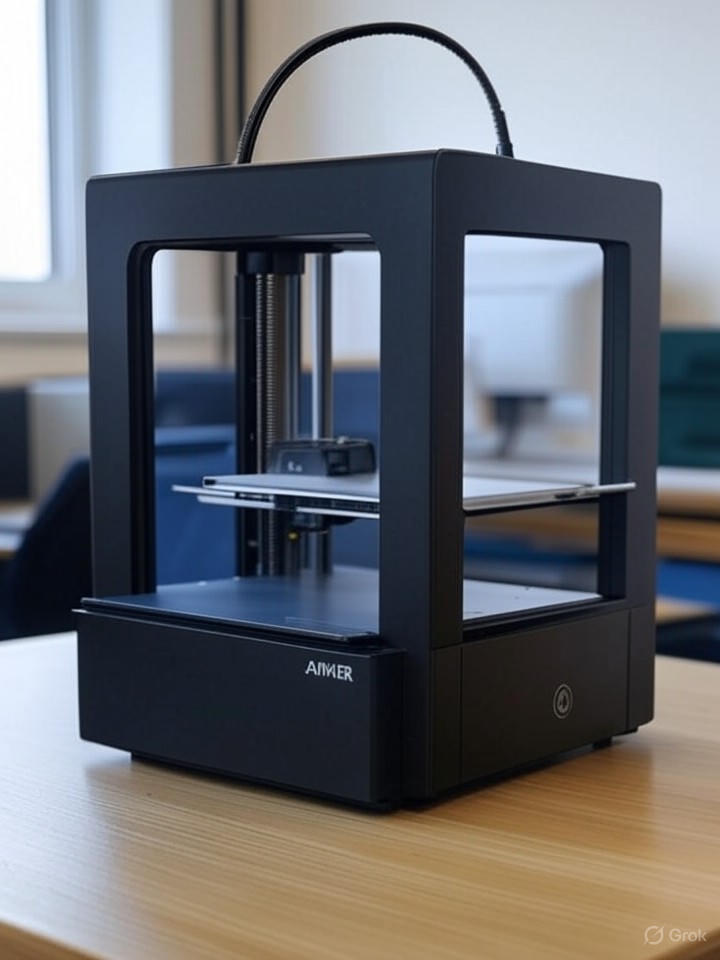In a surprising turn for the consumer electronics sector, Anker, the charging and accessories giant, has indefinitely halted sales of its 3D printers, including the popular AnkerMake M5 and M5C models. This move comes just months after the company announced a spin-off of its 3D printing division into a new sub-brand called EufyMake, promising ongoing support for existing customers. Industry observers are now questioning whether this signals a full retreat from the competitive 3D printing market, where supply chain vulnerabilities have increasingly plagued newcomers.
The decision underscores broader challenges in the hardware industry, where rapid innovation often clashes with manufacturing dependencies. Anker’s spokesperson, Brett White, confirmed to reporters that sales are “paused,” but offered no timeline for resumption or hints at future models. This ambiguity has left owners of the M5 and M5C—devices once lauded for their speed and accessibility—scrambling for parts and wondering about long-term viability.
Supply Chain Strains Force a Strategic Pivot
Recent reports highlight how critical component shortages have crippled Anker’s ambitions. According to a detailed account in Tom’s Hardware, the company cited an “inability to obtain specific, critical components” as the primary reason for stepping back. This echoes global supply disruptions that have hit tech firms hard, from semiconductors to specialized nozzles essential for 3D printing precision.
EufyMake, intended as a dedicated hub for these products, now sells only filament, accessories, and an unrelated UV texture printer. The absence of core printers and key replacement parts, such as hotends for the M5C, has sparked frustration among users. Online forums, including Reddit’s r/AnkerMake community, buzz with complaints, with some owners labeling their machines as “garbage” due to the sudden support vacuum.
Customer Fallout and Promises Unmet
The fallout extends beyond immediate sales halts. In March, Anker assured customers of “comprehensive customer service and support” under EufyMake, a pledge that now appears hollow. As noted in The Verge‘s investigative report, the brand has ceased offering essential components needed for repairs, leaving enthusiasts potentially unable to maintain their devices. This has prompted warnings from outlets like NotebookCheck.net, advising owners to brace for defects without recourse.
For industry insiders, this episode reveals the perils of diversifying into niche hardware without robust supplier networks. Anker entered the 3D printing space in 2022 with fanfare, positioning the M5 as a high-speed alternative to established players like Prusa or Creality. Yet, as Gagadget reported, the printers have vanished from official sales channels, signaling a quiet exit amid mounting operational hurdles.
Industry Ripples and Future Uncertainties
Analysts point to this as part of a larger pattern where non-specialist companies struggle in specialized tech arenas. How-To Geek detailed how EufyMake’s pivot leaves existing printers in limbo, with users turning to third-party sources for parts—a risky proposition that could void warranties or compromise quality. Meanwhile, competitors may benefit from the vacuum, as Anker’s withdrawal reduces options in the affordable, user-friendly segment.
Looking ahead, the episode raises questions about corporate accountability in consumer tech. Will Anker resume production once supply issues ease, or is this a permanent bow-out? As Fabbaloo observed, the M5C’s disappearance from websites suggests “product line optimization” as a euphemism for abandonment. For now, affected customers are advised to stockpile available parts, while the industry watches closely for Anker’s next move in an ever-evolving market.
Lessons for Tech Diversification Strategies
This development serves as a cautionary tale for companies eyeing expansion into emerging technologies. Anker’s foray, backed by its strong brand in power solutions, initially promised disruption but faltered on execution. Insights from All3DP confirm the M5C’s discontinuation, attributing it to sales strategy adjustments that prioritize core competencies over ambitious side ventures.
Ultimately, the halt not only disrupts current users but also erodes trust in brands that overpromise. As supply chains stabilize globally, Anker may yet revisit 3D printing, but for now, its retreat highlights the high stakes of innovation in hardware manufacturing.




 WebProNews is an iEntry Publication
WebProNews is an iEntry Publication